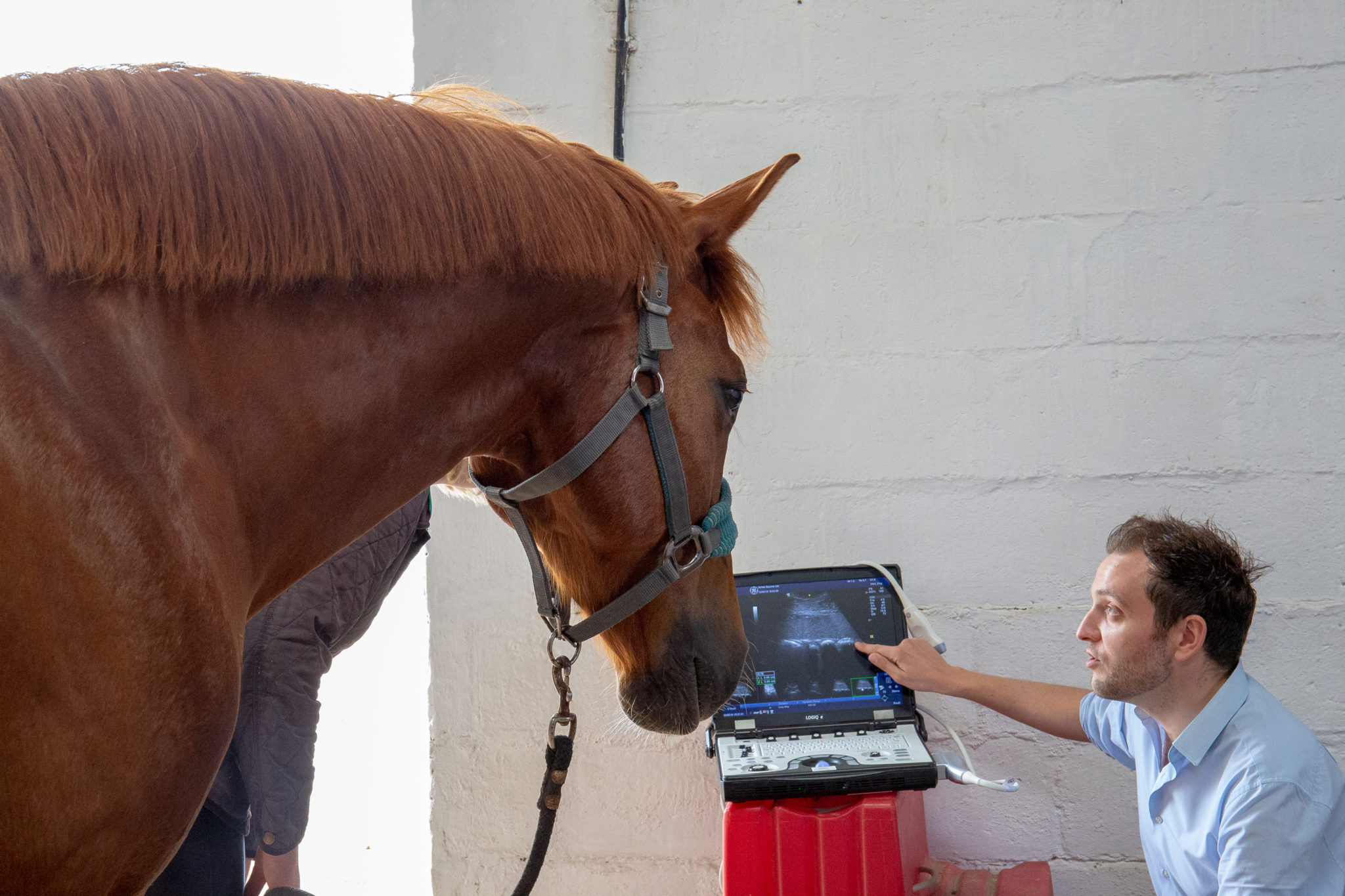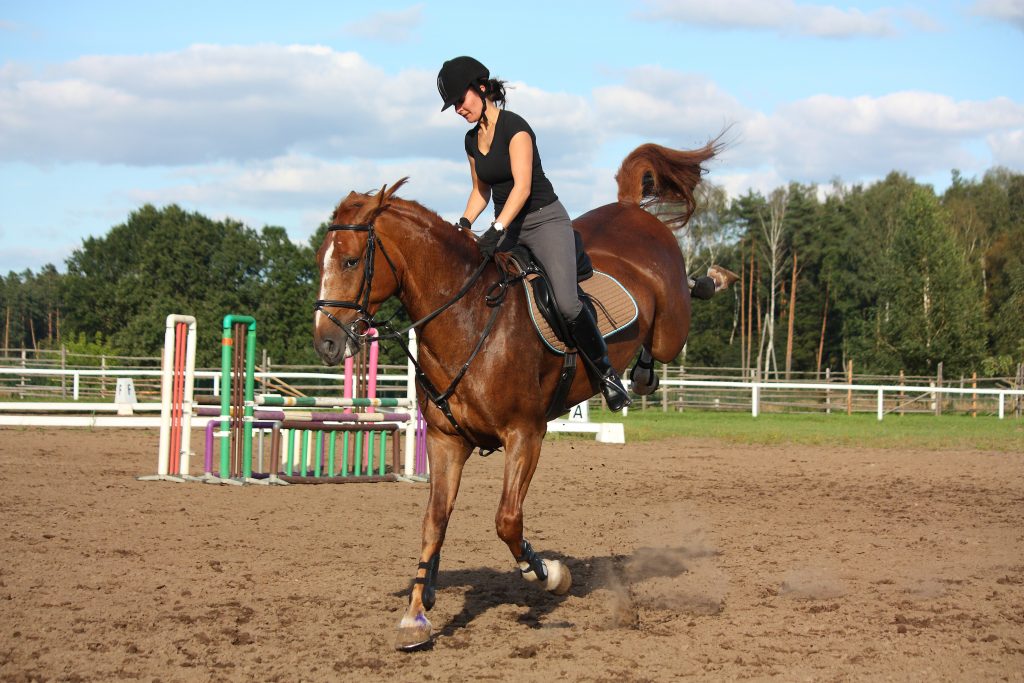From Colic to Comfort: Understanding and Preventing Common Equine Digestive Issues
The equine digestive system represents one of nature’s most remarkable evolutionary adaptations, yet it remains paradoxically vulnerable to numerous disorders that can range from mild discomfort to life-threatening emergencies. In the United Kingdom, where approximately 800,000 horses and ponies are kept across diverse management systems, understanding digestive health has become increasingly crucial for horse owners, managers, and veterinary professionals. This comprehensive guide examines the intricate relationship between equine anatomy, management practices, and digestive health, providing evidence-based strategies to prevent common disorders and maintain optimal gastrointestinal function.
Understanding the Equine Digestive System
The horse’s digestive system has evolved over millions of years to process a diet of low-quality, high-fibre plant material through continuous grazing. The British Horse Society explains that “horses forage for 18 hours per day because their digestive system only needs a small amount of food passing through it continuously to remain healthy.” This fundamental understanding underpins all successful digestive health management.
Anatomical Overview
The equine digestive tract consists of distinct regions, each with specialised functions:
| Digestive Region | Length/Capacity | Primary Function | Key Considerations |
|---|---|---|---|
| Mouth | – | Prehension, mastication, salivation | Dental health crucial for proper chewing |
| Oesophagus | 1.2-1.5 metres | Peristaltic transport | One-way valve prevents reflux |
| Stomach | 8-12 litres | Protein/fat digestion, acid production | Small capacity, empties at 2/3 full |
| Small intestine | ~21 metres | Enzymatic digestion, nutrient absorption | Duodenum, jejunum, ileum |
| Large intestine | ~8 metres | Microbial fermentation, water absorption | Caecum (35L), large colon (90L) |
The British Horse Society emphasises that “the equine digestive tract is unique because it digests portions of feed enzymatically first in the foregut and ferments in the hindgut.” This dual-phase digestion system requires careful management to maintain optimal function.
The Microbial Ecosystem
The hindgut houses a complex microbial ecosystem comprising bacteria, protozoa, and fungi that ferment fibrous material into volatile fatty acids, which provide up to 70% of the horse’s energy requirements. This delicate ecosystem can be disrupted by dietary changes, stress, medication, or management factors, leading to digestive disorders.
Common Equine Digestive Disorders
Colic: The Most Feared Digestive Emergency
Colic remains the leading cause of death in horses and represents one of the most significant challenges facing equine veterinary medicine. The Royal Veterinary College defines colic as “a general term referring to abdominal pain, which could have a variety of causes.”
Types of Colic
Spasmodic Colic The British Horse Society describes this as “one of the most common types of colic” characterised by “intermittent sharp bouts of pain, presumed to be when sections of the gut contract in an abnormal manner.” Loud gut sounds are typically present, and the condition often responds well to antispasmodic medications.
Tympanic Colic (Gas Colic) This condition occurs when “excess gas builds up in the intestines, causing them to overstretch and become painful.” High-pitched gut sounds and visible abdominal distension are characteristic features. Gas colic often results from dietary indiscretion or rapid fermentation of easily digestible carbohydrates.
Impaction Colic Impaction colic involves “a blockage that obstructs the digestive system and prevents normal passage of food through the gut.” This presents as “low-grade prolonged pain often with more subtle signs.” Large colon impactions are most common, particularly in the pelvic flexure region.
Displacement and Strangulation Colic These represent the most serious forms of colic, where “a section of the gut moves abnormally within the abdomen” or becomes twisted, potentially cutting off blood supply. The Royal Veterinary College notes that “strangulating lesions, where part of the intestine is displaced or twisted so blood flow to the intestine is compromised, would be a surgical emergency.”
Recognising Colic: The REACT Protocol
The British Horse Society has developed the REACT protocol to help owners recognise colic symptoms:
R – Restless or Agitated
- Attempts to lie down
- Repeatedly rolling
- Unexplained sweating
- Box-walking or circling
E – Eating Less or Reduced Droppings
- Eating less or nothing at all
- Passing fewer or no droppings
- Changes in droppings consistency
A – Abdominal Pain
- Flank watching
- Pawing at the ground
- Kicking at the belly
C – Clinical Changes
- Increased heart rate
- Reduced or absent gut sounds
- Changes in gum colour (should be salmon pink)
- Rapid breathing rate
- Skin abrasions over the eyes
T – Tired or Lethargic
- Lying down more than usual
- Lowered head position
- Dull and depressed demeanour
Equine Gastric Ulcer Syndrome (EGUS)
Equine Gastric Ulcer Syndrome affects up to one-third of horses and represents a significant welfare concern. The British Horse Society defines EGUS as “lesions, ulcerations and erosions to the horse’s digestive tract.”
Risk Factors for EGUS
Dietary Factors:
- Extended periods without forage availability
- High-concentrate, low-forage diets
- Irregular feeding schedules
- Prolonged fasting periods
Management Factors:
- Intensive exercise regimens
- Frequent transportation
- Limited social interaction
- Restricted turnout
- Stall confinement
Pharmacological Factors:
- Prolonged use of non-steroidal anti-inflammatory drugs (NSAIDs)
- High-dose phenylbutazone (“bute”) administration
Clinical Signs of EGUS
The British Horse Society identifies several clinical signs:
- Weight loss despite adequate feed intake
- Dull, depressed demeanour
- Reduced athletic performance
- Resistance to aids when ridden
- Grumpy or aggressive behaviour during girthing, rugging, or grooming
- Intermittent colic-like signs
- Reduced appetite
- Chronic diarrhoea (particularly in foals)
- Teeth grinding (bruxism)
- Development of stereotypical behaviours
Equine Choke
Equine choke, distinct from human choking, involves oesophageal obstruction whilst maintaining airway patency. The British Horse Society emphasises that “choke is different in horses compared to humans in that whilst the oesophagus is blocked, the horse can still breathe as the trachea (windpipe) remains clear.”
Causes of Equine Choke
Feed-Related Causes:
- Unsoaked sugar beet pulp or similar expanding feeds
- Poorly cut or inadequately chewed succulents
- Rapid consumption of concentrates
- Inadequate water intake during feeding
Anatomical Causes:
- Dental problems preventing proper mastication
- Oesophageal strictures or anatomical abnormalities
- Age-related changes in swallowing mechanics
Behavioural Causes:
- Competitive feeding environments
- Anxiety or stress during feeding
- Inadequate chewing due to pain or discomfort
Prevention Strategies: Building a Foundation for Digestive Health
Nutritional Management
Forage-First Feeding Philosophy
The British Horse Society establishes five essential nutrients for horses: water, fibre, carbohydrates, fats, and protein. However, the foundation of equine nutrition must be high-quality forage.
Forage Requirements:
- Minimum 1.5% of body weight daily in forage dry matter
- Ideally 2-2.5% for optimal digestive health
- 24/7 access to forage or frequent small meals
- High-quality hay or haylage free from mould and dust
Concentrate Management:
- Maximum 0.5% of body weight per meal in concentrates
- Multiple small feeds rather than large meals
- Avoid feeding more than 2kg of concentrates per meal for a 500kg horse
- Ensure adequate chewing time between concentrate meals
Feed Transition Protocols
The British Horse Society recommends making “changes to feed gradually, ideally over 10-14 days to reduce the risk of colic.” This transition period allows the microbial population to adapt to new feed substrates.
Transition Schedule:
- Days 1-3: 75% old feed, 25% new feed
- Days 4-6: 50% old feed, 50% new feed
- Days 7-9: 25% old feed, 75% new feed
- Days 10-14: 100% new feed
Water Management
Adequate water intake is crucial for digestive health, with horses requiring 20-45 litres daily depending on environmental conditions, workload, and feed type. The British Horse Society emphasises providing “a constant supply of fresh, clean water.”
Water Quality Standards:
- Temperature: 10-18°C optimal
- pH: 6.5-8.5 acceptable range
- Total dissolved solids: <1000 ppm
- Nitrate levels: <10 ppm
- Regular testing and cleaning of water sources
Parasite Control
Intestinal parasites can significantly impact digestive health and predispose horses to colic. The British Horse Society recommends implementing evidence-based parasite control programmes.
Modern Parasite Control Strategy:
- Regular faecal egg counts (FEC) every 3-6 months
- Targeted anthelmintic treatment based on FEC results
- Pasture management including manure removal
- Quarantine protocols for new horses
- Annual tapeworm testing and treatment
Exercise and Management
Regular exercise promotes digestive health by stimulating gut motility and preventing impactions. However, exercise timing relative to feeding is crucial.
Exercise Guidelines:
- Avoid intense exercise within 1 hour of concentrate feeding
- Provide small amounts of forage before exercise to buffer gastric acid
- Gradual warm-up and cool-down periods
- Regular turnout to encourage natural movement patterns
Emergency Management Protocols
Colic Emergency Response
When colic is suspected, immediate veterinary attention is essential. The British Horse Society provides clear emergency protocols:
Immediate Actions:
- Contact your veterinarian immediately
- Provide precise location using What3Words or GPS coordinates
- Remove all feed and water from the horse’s environment
- Keep the horse calm and safe
- Monitor vital signs if trained to do so
Whilst Awaiting Veterinary Care:
- Allow the horse to lie down or roll if comfortable
- Gentle walking may provide comfort but don’t force movement
- Maintain safety for both horse and handler
- Document symptoms and timeline for veterinary assessment
Choke Emergency Management
The British Horse Society outlines specific protocols for managing choke emergencies:
Immediate Response:
- Remain calm to avoid increasing horse’s anxiety
- Remove all food and water immediately
- Monitor for spontaneous resolution (up to 10 minutes)
- Contact veterinarian if obstruction persists
- Never attempt to dislodge the blockage with water
Veterinary Treatment Options:
- Sedation to reduce anxiety and muscle spasms
- Muscle relaxants to ease oesophageal contractions
- Nasogastric intubation with water lavage
- Endoscopic examination and removal if necessary
Diagnostic Approaches and Veterinary Care
Comprehensive Digestive Health Assessment
Modern equine veterinary practice employs sophisticated diagnostic techniques to evaluate digestive health:
Clinical Examination:
- Thorough physical examination including rectal palpation
- Auscultation of gut sounds in multiple locations
- Assessment of hydration status and mucous membrane colour
- Evaluation of pain responses and behaviour
Advanced Diagnostics:
- Nasogastric intubation for gastric reflux assessment
- Abdominocentesis for peritoneal fluid analysis
- Ultrasonographic examination of abdominal organs
- Radiographic imaging for impaction evaluation
Laboratory Testing:
- Complete blood count and serum biochemistry
- Inflammatory markers (fibrinogen, SAA)
- Lactate levels for tissue perfusion assessment
- Faecal examination for parasites and sand content
Gastroscopy for EGUS Diagnosis
The British Horse Society states that “the only way to diagnose if a horse has ulcers is for a vet to perform a gastroscopy.” This procedure involves:
Pre-examination Preparation:
- 12-hour fasting period minimum
- Sedation for patient comfort
- Endoscopic examination via nasal passage
Ulcer Grading System:
- Grade 0: Normal gastric mucosa
- Grade 1: Superficial mucosal damage
- Grade 2: Deeper mucosal ulceration
- Grade 3: Extensive deep ulceration
- Grade 4: Severe ulceration with potential perforation
Treatment Protocols and Management
Medical Management of Digestive Disorders
Colic Treatment: The Royal Veterinary College notes that “in many cases treatment will just involve giving fluids and pain relief.” Treatment protocols vary by colic type:
- Spasmodic Colic: Antispasmodic medications, analgesics
- Impaction Colic: Fluid therapy, laxatives, nasogastric tubing
- Gas Colic: Simethicone, exercise, dietary modification
- Displacement/Strangulation: Surgical intervention often required
EGUS Treatment:
- Omeprazole therapy for acid suppression
- Dietary modifications to increase buffering
- Management changes to reduce stress
- Mucosal protectants and healing agents
Surgical Interventions
Approximately 7-10% of colic cases require surgical intervention. The Royal Veterinary College maintains “state-of-the-art facilities needed to carry out advanced diagnostics, colic surgery and post-operative care.”
Surgical Indications:
- Strangulating lesions
- Severe impactions unresponsive to medical therapy
- Gastric dilation and rupture
- Intestinal displacements requiring repositioning
Post-Surgical Care:
- Intensive monitoring for complications
- Gradual feed reintroduction
- Long-term dietary modifications
- Regular veterinary follow-up
Nutritional Therapy and Gut Health Support
Functional Feeds and Supplements
Prebiotics and Probiotics:
- Live yeast cultures (Saccharomyces cerevisiae)
- Prebiotic fibres (fructooligosaccharides, mannanoligosaccharides)
- Direct-fed microbials for gut flora support
Digestive Aids:
- Digestive enzymes for improved nutrient utilisation
- Buffering agents to maintain optimal pH
- Psyllium husk for sand clearance
Gut Healing Compounds:
- L-glutamine for enterocyte nutrition
- Pectin and lecithin for mucosal protection
- Antioxidants (vitamin E, selenium) for cellular protection
Specialised Feeding Programmes
Post-Colic Feeding:
- Gradual reintroduction of feed over 24-48 hours
- Small, frequent meals of easily digestible feeds
- High-quality forage as the foundation
- Monitoring for signs of discomfort or complications
EGUS Dietary Management:
- Continuous forage availability
- Reduction in starch and sugar content
- Feeding forage before exercise
- Multiple small concentrate meals if required
Prevention Through Management Excellence
Routine Health Monitoring
Daily Observations:
- Appetite and water intake
- Faecal production and consistency
- Behaviour and demeanour changes
- Physical comfort and mobility
Weekly Assessments:
- Body condition scoring
- Weight monitoring
- Pasture and feed quality evaluation
- Water source inspection
Monthly Evaluations:
- Comprehensive health assessment
- Dental examination
- Parasite monitoring
- Management system review
Environmental Management
Stable Design:
- Adequate ventilation to prevent respiratory issues
- Non-slip flooring to prevent injuries
- Appropriate drainage to maintain dry conditions
- Easy access to water and forage
Pasture Management:
- Regular manure removal to break parasite cycles
- Appropriate stocking density to prevent overgrazing
- Rotational grazing systems where possible
- Monitoring for toxic plants and hazards
Stress Reduction Strategies
Social Environment:
- Appropriate companionship and social interaction
- Stable groupings to prevent bullying
- Visual and physical contact with other horses
- Consistent daily routines
Management Practices:
- Minimising unnecessary changes in routine
- Gradual introduction of new horses or environments
- Appropriate exercise and turnout schedules
- Regular handling and human interaction
Quality Assurance and Monitoring
Feed Safety and Quality Control
Forage Quality Assessment:
- Visual inspection for mould, dust, and foreign objects
- Nutritional analysis when indicated
- Proper storage in dry, well-ventilated areas
- First-in, first-out rotation system
Concentrate Feed Management:
- Purchase from reputable suppliers with quality assurance
- Check use-by dates and storage conditions
- Inspect for signs of rancidity or contamination
- Store in rodent-proof containers
Water Quality Monitoring
Regular Testing Protocol:
- Bacterial contamination assessment
- Mineral content analysis
- pH and temperature monitoring
- Visual inspection for clarity and odour
Water System Maintenance:
- Regular cleaning of troughs and automatic waterers
- Inspection of pipes and connections for leaks
- Backup water supply systems
- Emergency water provision planning
Long-term Digestive Health Management
Preventive Care Programmes
Routine Veterinary Care:
- Annual comprehensive health examinations
- Dental care every 6-12 months
- Vaccination programmes as recommended
- Regular body condition assessment
Nutritional Consultations:
- Professional dietary analysis and recommendations
- Seasonal feed adjustments
- Performance-based nutritional modifications
- Supplement requirement assessments
Record Keeping and Documentation
Health Records:
- Detailed feeding schedules and quantities
- Weight and body condition trends
- Veterinary treatments and medications
- Parasite control history
Incident Documentation:
- Colic episodes and treatments
- Digestive upsets and management responses
- Feed changes and horse reactions
- Environmental factors and seasonal influences
Future Directions in Equine Digestive Health
Emerging Research Areas
Microbiome Studies:
- Gut microbiota analysis and manipulation
- Personalised nutrition based on individual microbiomes
- Probiotic development for specific conditions
- Antibiotic resistance and alternative therapies
Genetic Factors:
- Genetic predisposition to digestive disorders
- Personalised medicine approaches
- Breed-specific nutritional requirements
- Inherited metabolic disorders
Technological Advances
Monitoring Technology:
- Wearable sensors for continuous health monitoring
- Real-time digestive function assessment
- Automated feeding systems with individual recognition
- Remote veterinary consultation capabilities
Diagnostic Improvements:
- Rapid point-of-care testing
- Advanced imaging techniques
- Non-invasive diagnostic methods
- Artificial intelligence in diagnostic interpretation
Conclusion
The prevention and management of equine digestive disorders requires a comprehensive understanding of equine physiology, careful attention to management practices, and proactive veterinary care. The British Horse Society reminds us that successful digestive health management begins with respecting the horse’s natural feeding behaviour and digestive physiology.
The key to preventing digestive disorders lies in maintaining consistency, quality, and attention to detail in all aspects of horse care. From providing constant access to clean water and high-quality forage to implementing gradual feed transitions and maintaining regular veterinary care, every aspect of management contributes to digestive health.
Early recognition of digestive disorders, particularly colic, can be life-saving. The REACT protocol provides horse owners with a systematic approach to identifying potential problems and seeking appropriate veterinary care. Similarly, understanding the risk factors for conditions like EGUS and equine choke enables proactive prevention strategies.
As our understanding of equine digestive physiology continues to evolve, so too do our approaches to prevention and treatment. The integration of advanced diagnostic techniques, personalised nutrition, and innovative therapeutic approaches promises to further improve outcomes for horses with digestive disorders.
The responsibility of maintaining equine digestive health extends beyond individual horse owners to encompass the broader equine community, including feed manufacturers, veterinary professionals, and researchers. By working together to implement evidence-based practices and share knowledge, we can continue to improve the health and welfare of horses throughout the United Kingdom.
Ultimately, the goal of digestive health management is not merely the absence of disease but the promotion of optimal comfort, performance, and quality of life. Through diligent attention to prevention, prompt recognition of problems, and appropriate intervention when necessary, we can help ensure that horses maintain healthy, comfortable digestive function throughout their lives.
The journey from colic to comfort is paved with knowledge, preparation, and commitment to excellence in equine care. By understanding the complexities of equine digestion and implementing comprehensive management strategies, we can significantly reduce the incidence of digestive disorders and improve outcomes when problems do arise. This commitment to digestive health represents one of the most important investments we can make in the welfare and well-being of our equine companions.


